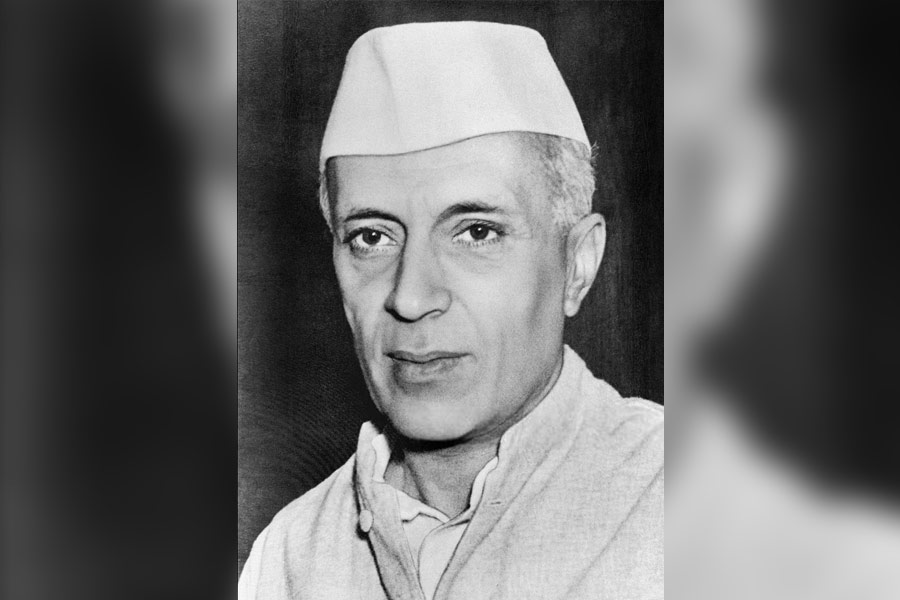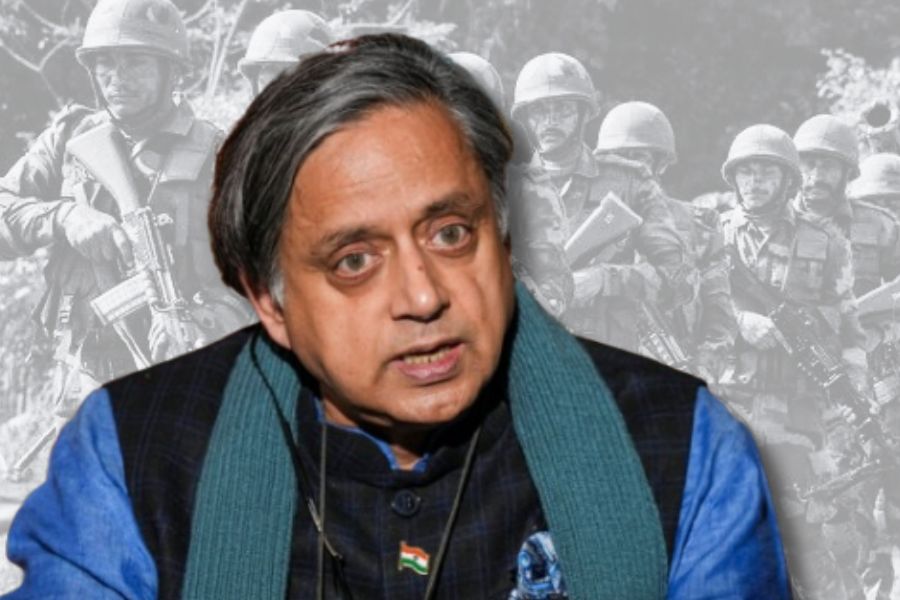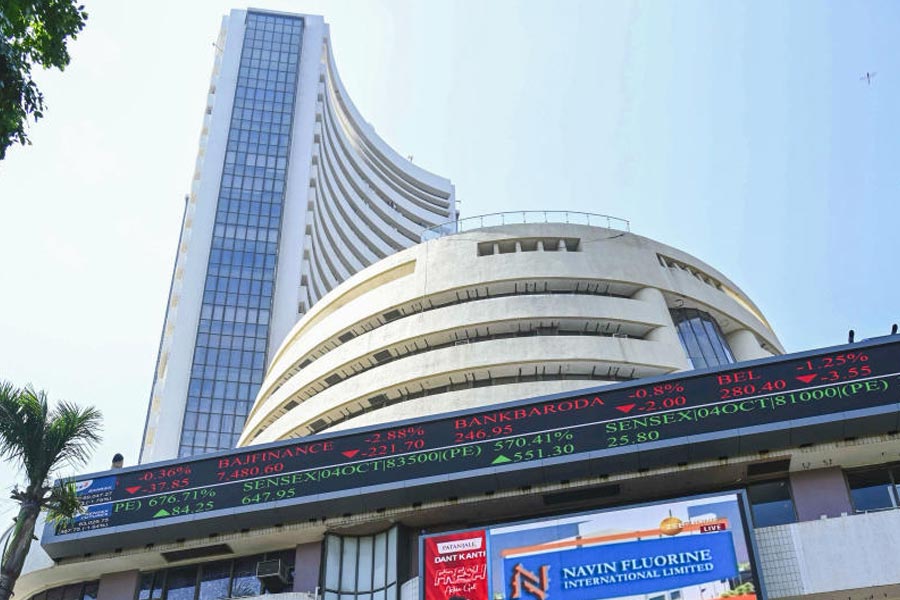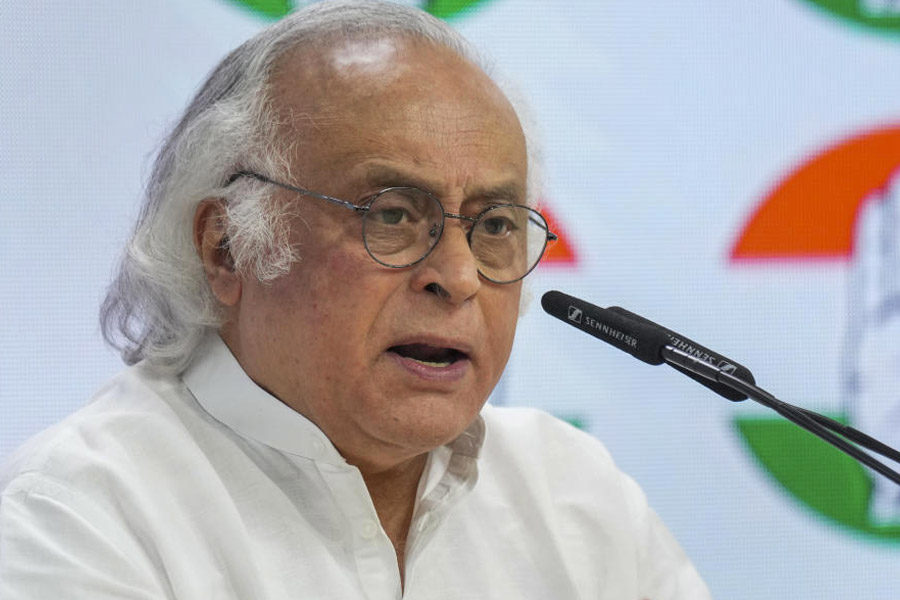 |
Kochi, Aug. 12: A giant grey hull with a flared ski-jump at its head slid slowly backwards from a dock in the Cochin Shipyard here this afternoon and India immediately claimed it was one of only five countries capable of building an aircraft carrier.
The carrier is only a shell of the vessel it promises to be but defence minister A.K. Antony’s wife Elizabeth formally named it the Indian Naval Ship Vikrant, in keeping with a naval tradition in which only women launch warships.
The Vikrant is designed to house 20 aircraft that will include MiG29K and LCA Tejas (navy) combat jets and a variety of helicopters when, if the builders can stick to timelines, it is commissioned into service in 2018.
Estimated to cost about Rs 20,000 crore, the Vikrant is referred to in official files as the Indigenous Aircraft Carrier-I (plans for a second carrier are on the drawing board).
Although America, Britain, Russia and France have been regular builders of aircraft carriers, China has recently acquired one after re-jigging a carrier bought from Russia. India is building the Vikrant from scratch.
Only three aircraft carriers are being built in the world today — USS Gerald R. Ford by the US which is slated to be operational in 2016, HMS Queen Elizabeth which is scheduled to go into trials in 2018, and the Vikrant.
A fourth, INS Vikramaditya (Admiral Gorshkov) is going through sea trials. Antony today said he expected it to be inducted into the naval fleet by the end of the year. Vikramaditya is four years late, its costs having doubled since it was contracted in 2004.
France and Britain have deferred or put on hold plans to build aircraft carriers because of the costs involved.
“We have truly evolved from being a buyer’s navy to a builder’s navy,” the chief of the naval staff, Admiral D.K. Joshi, said.
In undertaking Project-71, India has got technological spin-offs. First, the Steel Authority devised a process to make the warship-grade steel that has gone into the Vikrant.
Second, Cochin Shipyard claims it has perfected three new types of welding processes that hold all the steel together to make the vessel. The steel and the welding processes will be used for all warship production in India from now on. The navy currently has 46 warships on order.
“I am not saying that there will never be any more imports,” said Commodore Saibal Sen, project director. “But from here on, if a proposal were to be floated to import a warship, everyone would sit up and ask, ‘Why?’ You will have to have a very good reason.”
India’s navy now operates only one aircraft carrier, INS Viraat, which has been given an extended life through refits. It is more than 50 years old and was originally with Britain’s Royal Navy as HMS Hermes.
As Vikrant (mark II) was sliding down the rails of the Cochin Shipyard dock this afternoon, the original INS Vikrant was being cut up at the naval dockyard in Mumbai. Both the Maharashtra government and the Indian Navy found it too expensive to maintain the carrier as a museum after it was decommissioned in 1997.
The navy ideally wants to have three carriers, one each for the eastern and western seaboards and one in reserve, to maintain its perceived maritime superiority over China. But that is not happening soon. Viraat will be decommissioned by the time Vikrant is ready in 2018.
China’s carrier, the Liaoning, was commissioned into its navy last year. The carrier was bought ostensibly by a resort operator on the plea that it would make a floating casino out of the abandoned Russian ship, Varyag. But the Chinese used the hull of the vessel to make their own carrier four years later.
Chinese concern
Chinese defence experts today said the Vikrant’s launch bore “great significance for the Indian navy” because it would allow it to wade into the Pacific Ocean, which China considers its backyard, PTI reported from Beijing.
By then, India’s navy will have already taken the lead over China’s with the Vikramaditya joining the Viraat by the end of this year, Senior Captain Zhang Junshe, vice-president of China’s Naval Research Institute, told the state-run CCTV today.
“Which means that by the end of this year, India will become the only country in Asia to have two aircraft carriers. This will enhance the overall capabilities, especially the power projection capabilities, of the Indian navy,” Zhang said.
He ruled out any race for more carriers in the region but justified India’s and China’s requirement for more carriers. He cited the two countries’ vast coastlines and huge populations and said they needed to defend sea lanes far from home because of their dependence on external trade.
Zhang had earlier told the state-run China Daily that the Vikrant would increase India’s capability to patrol distant oceans and, “along with a reinforced naval strength, will further disrupt the military balance in South Asia”.
The launches of the Vikrant and the Arihant have aroused curiosity and concern in several state-run think tanks in China.
“The new indigenous carrier will further strengthen India’s naval power and also add some bargaining chips with the world’s major military vendors such as Russia,” Wang Daguang, a Beijing-based researcher of military equipment, told China Daily.
Song Xiaojun, a military commentator in Beijing, said the Vikrant uses technology from the 1980s and thus serves as an experiment for India’s navy to set technical standards for future vessels.











